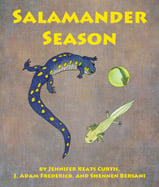Alignment to Standards for SC

| Grade | Number | Standard |
|---|---|---|
| 2 | SC:2-2.1 | Recall the basic needs of animals (including air, water, food, and shelter) for energy, growth, and protection. |
| 2 | SC:2-2.2 | Classify animals (including mammals, birds, amphibians, reptiles, fish, and insects) according to their physical characteristics. |
| 2 | SC:2-2.3 | distinct environments throughout the world support the life of different types of animals. |
| 2 | SC:2-2.4 | Summarize the interdependence between animals and plants as sources of food and shelter. |
| 2 | SC:2-2.5 | Illustrate the various life cycles of animals (including birth and the stages of development). |
| 3 | SC:3-2.1 | Illustrate the life cycles of seed plants and various animals and summarize how they grow and are adapted to conditions within their habitats. |
| 3 | SC:3-2.2 | Explain how physical and behavioral adaptations allow organisms to survive (including hibernation, defense, locomotion, movement, food obtainment, and camouflage for animals and seed dispersal, color, and response to light for plants). |
| 3 | SC:3-2.3 | Recall the characteristics of an organisms habitat that allow the organism to survive there. |
| 3 | SC:3-2.4 | Explain how changes in the habitats of plants and animals affect their survival. |
| 4 | SC:4-2.1 | Classify organisms into major groups (including plants or animals, flowering or nonflowering plants, and vertebrates [fish, amphibians, reptiles, birds, and mammals] or invertebrates) according to their physical characteristics. |
| 4 | SC:4-2.2 | the characteristics of distinct environments (including swamps, rivers and streams, tropical rain forests, deserts, and the polar regions) influence the variety of organisms in each. |
| 4 | SC:4-2.5 | Explain how an organisms patterns of behavior are related to its environment (including the kinds and the number of other organisms present, the availability of food and other resources, and the physical characteristics of the environment). |
| 5 | SC:5-2.2 | composition of an ecosystem, considering both biotic factors (including populations to the level of microorganisms and communities) and abiotic factors. |
| 5 | SC:5-2.3 | characteristics of different ecosystems (including estuaries/salt marshes, oceans, lakes and ponds, forests, and grasslands). |
| K | SC:K-2.1 | Recognize what organisms need to stay alive (including air, water, food, and shelter). |
| K | SC:K-2.2 | Identify examples of organisms and nonliving things. |
| K | SC:K-2.5 | Recognize that all organisms go through stages of growth and change called life cycles. |
| K | SC:K-4.3 | Summarize ways that the seasons affect plants and animals. |